![]()
Thyroxine
The metabolic rate hormone
that prevents 'a pain in the neck'!
![]()
Mike Thompson and Becky Ting
Rugby School, UK
![]()
Molecule of the Month April 2020
Also available: HTML version.
![]()
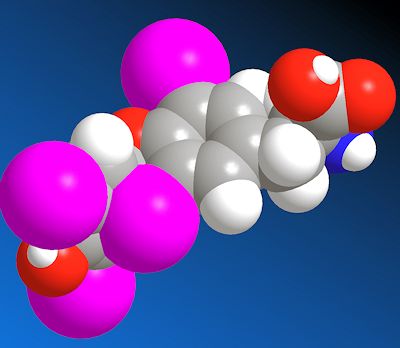
ThyroxineThe metabolic rate hormone
|
 |
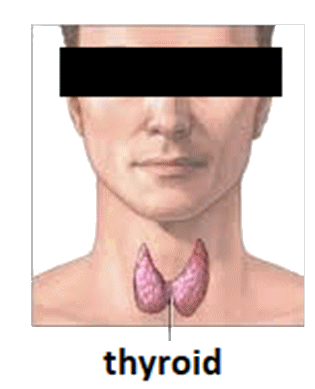 Metabolic rate?
Metabolic rate?It's the speed at which the various metabolic processes in the body occur - these must not be too fast or too slow, otherwise serious medical problems can arise. Thyroxine is a hormone made in the thyroid gland that controls this metabolic rate, i.e. it keeps the body functioning at the right speed. Its full name is tetraiodothyronine with the molecular formula C15H11NO4I4. It contains 4 iodine atoms - which is why biochemists often abbreviate it to 'T4' (so as to differentiate it from other similar molecules with fewer iodines).
Yes. The thyroid gland is a small gland below the voice box (larynx) in the front part of the neck, and forms part of the endocrine system. It is one of a number of glands in the body that produce different hormones - biomolecules that affect heart rate and body temperature.
Two important chemicals made in the thyroid gland are L-thyroxine (T4) and L-triiodothyroxine (T3).
 |
 |
| L-thyroxine, T4 | L-triiodothyroxine, T3 |
These compounds found in vertebrates are the only physiologically significant molecule containing the largest of the naturally occurring halogens (iodine). The carbon bonded to the NH2 group is chiral, and so the molecule has 2 mirror-image isomers (enantiomers), one of which occurs naturally, the other being only made in the laboratory. To identify the naturally occurring enantiomer, biologists prefix the name using the symbol L (laevorotatory). Chemists use the CIP (Cahn-Ingold-Prelog) rules to assign the enantiomer as R (rectus) or S (sinister).
Think of thyroxine as being like the ‘Goldilocks’ hormone. You will have problems if you have too much (hyperthyroidism) or too little (hypothyroidisim).
| Thyroxine Levels | Medical condition | Result | Side effects |
|---|---|---|---|
| Not enough | Hypothyroidism (underactive thyroid gland) |
Cells work slower than normal | Tired and weight gain |
| Too much | Hyperthyroidism (overactive thyroid gland) |
Cells work faster than normal | Shaky and anxious and weight loss |
|
Thyroxine regulates the body’s metabolic rate. Metabolism is the conversion of food to energy and building blocks for biological molecules, e.g. proteins, nucleic acids, and carbohydrates. This means that thyroxine is essential to the development and growth of every cell in the body. Thyroxine affects nearly all the important functions of the body, like heart and digestive functions, muscle control, brain development and maintenance of bones. Where does the body’s thyroxine come from?Our brain needs to regulate how much thyroxine is produced, and it does this via two hormones - the thyrotropin-releasing hormone (TRH) and thyroid-stimulating hormone (TSH). The hypothalamus secretes TRH, which is very short-lived and only has to travel a short distance to the pituitary gland. There it stimulates the secretion of TSH. TSH then stimulates the production of thyroxine (T4) and triiodothyroxine (T3) in the thyroid gland. Levels of thyroxine (T4) and triiodothyroxine (T3) in the blood are regulated by a feedback loop. So, when the levels of thyroxine increase, they prevent the release of TRH, and therefore TSH. This system allows the body to maintain a constant level of thyroid hormones in the body. The body needs a regular supply of iodine to produce these vital thyroid hormones. Iodine (as iodide) is found in reasonable quantities in seaweed, dairy, meat, fish, and other sea food. Vegans might need to add low sodium salt, which has added iodide, to their vegetables. |
 The Thyroid Feedback loop. Image: Mikael Häggström - Wikimedia Commons. |
You might get what's known as 'Derbyshire neck' or goitre.
Usually the thyroid is a small butterfly shaped gland. In parts of Derbyshire (UK) where the soil is lacking iodide and hence dairy products are also lacking iodide, some people used to develop a swelling in the neck called a goitre - from the Latin gutturia, meaning throat. This goitre was due to the thyroid gland becoming enlarged as it tried to take up more iodine. A similar situation arose in Ohio, USA, in the early years of the 20th century, and this region became known as the 'goitre belt'. In severe or prolonged cases of iodine deficiency, the goitre is accompanied by a degeneration of mental function, medically termed 'cretinism', as the lack of thyroxine impairs brain development and operation.
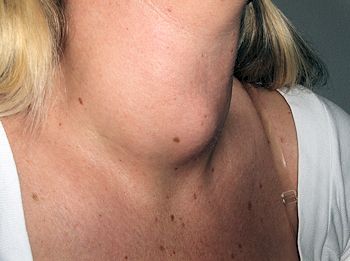 |
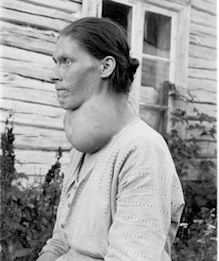 |
| Goitre (swelling of the neck) can be mild (Class II) as shown here... Photo: By Drahreg01 - Own work, Wikimedia Commons. |
...or more severe (Class III). Photo: By Martin Finborud - Arkiv for Ringsaker, Wikimedia Commons. |
Yes, correct. Although goitre isn't usually painful, just uncomfortable.
No, in fact, descriptions of goitre have been found in Hindu writings earlier than 1500 BC. The famous Greek medic, Hippocrates, wrote about goitre. In the Middle Ages, the presence of goitre was even considered a sign of beauty in some societies!
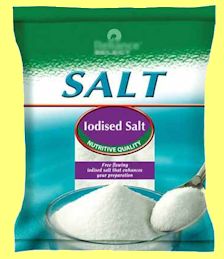 Was there any treatment?
Was there any treatment?Burnt sponge and seaweed were used in the treatment of goitre in China since 1500 BC, and this practice made its way to Europe in the 12th century - although no-one knew why it worked. To find out, the French chemist Bernard Courtois extracted a brown substance from these materials in 1812, and passed this new substance on to the famous English chemist Humphry Davy (who was working in Paris at the time). He examined it and named it 'iodine'. Soon after, in 1853, another French chemist, Chatin, found a correlation between the iodine content of water, soil and air and the prevalence of goitre in the population. Within a few years, 'tincture of iodine' was being used as a successful treatment for goitre all over Europe and the US. Many countries have since introduced iodised salt (table salt with added iodine, usually in the form of potassium iodate, potassium iodide, sodium iodate, or sodium iodide) as a preventative measure for their populations. One of the first countries to do so was Switzerland in the 1920s, and the virtual disappearance of cretinism and goitre from this country soon afterwards gave convincing evidence about the relationship between endemic goitre and cretinism.
The first mention of the thyroid gland was in a book written by Galen, the famous Greek doctor, in the first century AD, who thought it served to lubricate the larynx. From about the mid-1500's onwards, various anatomists worked out the structure of the gland, but still no-one really knew what its purpose was. In 1656 a doctor called Wharton suggested that the purpose of the thyroid was simply to 'beautify the neck' by giving it a rounded contour by filling the vacant spaces around the larynx! Even up to 1880 the thyroid was proposed to be a receptacle of worms or even a vascular shunt to cushion the brain against a sudden increase in blood flow.
It wasn't until the mid-1800's that the idea began that the thyroid formed and secreted a vital substance into the circulation. In experiments where the thyroids were removed from dogs and pigs, the animals developed swellings around their necks (a condition called myxoedema), similar to those seen in human patients with goitre, and the animals did not survive very long. However, if the thyroid was removed and then grafted back into the body elsewhere, the animals did not show any swellings and survived - at least for a while until the gland was absorbed by the body. These experiments proved that the thyroid was, indeed, essential for survival, and its function was thought to be to neutralize or remove poisons from the body. Because the thyroid seemed to prevent myxoedema, in the 1880-90s a group of scientists, pioneered by a doctor called George Murray, undertook experiments where sheep-thyroid extracts were given to patients with goitre. These extracts reduced or eliminated the swelling. So this provided a clue that there was a substance inside the thyroid that prevented goitre, and that the patients had a faulty thyroid gland. It is now believed that Chinese physicians of the Tang Dynasty (618–907) were actually the first to successfully treat patients with goitre by using the iodine-rich thyroid gland of animals such as sheep and pigs—in raw, pill, or powdered form. Perhaps news of these treatments had reached Europe at this time due to increasing trade with China, and given the researchers the idea. In any case, the hunt was now on to identify the substance. Analysis of the chemical composition of the thyroid extract showed it was unusually high in iodine. Finally, in 1919, a biochemist called Edward C. Kendall (photo, right) isolated an iodine-containing crystalline product from alkaline hydrolyses of thyroid tissues and named it “thyroxine”. His impressive feat of isolation involved 3000 kg of the thyroid glands of pigs. Edward Kendall shared the Nobel Prize in Medicine in 1950, although this was as much for his other discovery, collagen, as thyroxine. Finally, in 1926, Dr C.R. Harrington of University College London determined the correct molecular structure of thyroxine (the tetraiodo derivative of thyronine), and he was able to synthesize the active compound. Nowadays, synthetic thyroxine (Levothyroxine) is manufactured in huge amounts as a treatment for thyroid hormone deficiency, and is on the World Health Organization's List of Essential Medicines. |
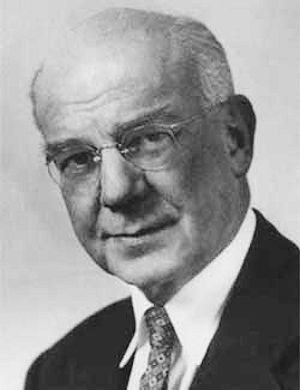 Edward C. Kendall |
A simple blood test (thyroid function test) can let a doctor know if a patient has an overactive or underactive thyroid gland. Normal levels of serum thyroxine should be 4.6 to 12 microgrammes per litre of blood. Thyroid disorders involving a poorly functioning thyroid gland are quite common, and can be treated with thyroxine supplements. In fact, in 2016 levothyroxine was the most prescribed medication in the United States with more than 114 million prescriptions. In contrast, to treat an overactive thyroid gland requires drugs that target the thyroid to reduce the T4 and T3 levels. Examples include methimazole (Tapazole) and propylthiouracil (PTu). Alternatively, radioactive iodine is given to the patient to shrink the thyroid gland and reduce its output.
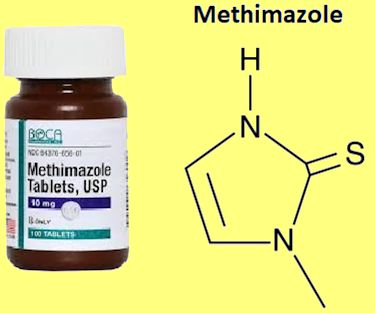 |
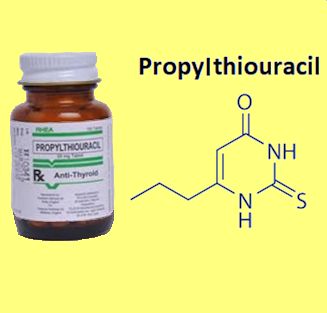 |
Yes, here are a few.
 |
 |
 |
| Liam Gallagher (Lead singer of Oasis, and rock legend from Manchester) |
George W. Bush (41st President of the United States) |
Oprah Winfrey (America’s media mogul) |
![]()
Wikipedia: Thyroid hormones; Edward C. Kendall; Levothyroxine; Iodised salt; Goitre
![]()
![]() Back to Molecule of the Month page. [DOI:10.6084/m9.figshare.10264997]
Back to Molecule of the Month page. [DOI:10.6084/m9.figshare.10264997]